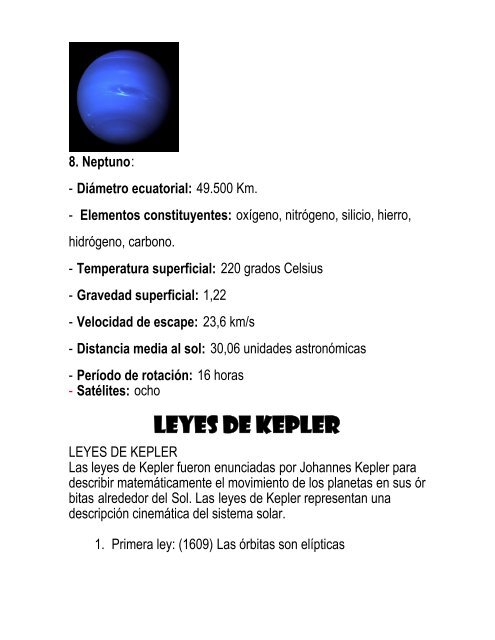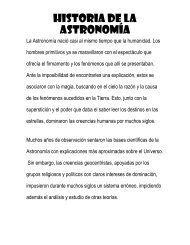HISTORIA DE LA ASTRONOMÍA
Create successful ePaper yourself
Turn your PDF publications into a flip-book with our unique Google optimized e-Paper software.
8. Neptuno:<br />
- Diámetro ecuatorial: 49.500 Km.<br />
- Elementos constituyentes: oxígeno, nitrógeno, silicio, hierro,<br />
hidrógeno, carbono.<br />
- Temperatura superficial: 220 grados Celsius<br />
- Gravedad superficial: 1,22<br />
- Velocidad de escape: 23,6 km/s<br />
- Distancia media al sol: 30,06 unidades astronómicas<br />
- Período de rotación: 16 horas<br />
- Satélites: ocho<br />
LEYES <strong>DE</strong> KEPLER<br />
LEYES <strong>DE</strong> KEPLER<br />
Las leyes de Kepler fueron enunciadas por Johannes Kepler para<br />
describir matemáticamente el movimiento de los planetas en sus ór<br />
bitas alrededor del Sol. Las leyes de Kepler representan una<br />
descripción cinemática del sistema solar.<br />
1. Primera ley: (1609) Las órbitas son elípticas




